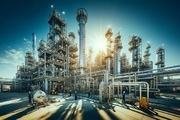Air pollution poses significant challenges for city communities especially for patients with pulmonary dysfunctions and children and elderlies with asthma. Nitrogen dioxides and carbon monoxides are major threats which lead to cancers and other incurable diseases.
Elaheh Kowsari a co-researcher in the project to synthetize photocatalysts as a main solution to environmental pollution told Mehr News science correspondent that photocatalytic process was an advanced oxidation process which used sunlight to activate photocatalysts; “when subject to pollutant gases, they oxidize these gases immediately, and produce less dangerous and poisonous gases; the project helped develop a nanocomposite photocatalysts containing graphene which decomposes poisonous gases in higher efficiencies,” she said.
“Nitrogen dioxide and carbon monoxide are resistance to oxidation; removing them by using photocatalysts is economically viable since they are cheaply produced, are highly efficient, are harmless, and produce innocuous reaction by-products and thus would be preferred to other methods of air filtering,” said Kowsari, “the two components are titanium dioxide (TiO2) and cobalt (Co) imidazole (Im) complex functionalized graphene oxide (FGO); the photocatalytic properties of TiO2 and complexing properties of Co-Im contribute to the efficiency of the complex.”
“The photodegradation experiments revealed a significant photocatalytic character of TiO2, physical adsorption of GO, and the affinity of cobalt to undergo complex formation with pollutant gases. The TiO2/FGO composite increases air pollutant degradation by nearly three times that of the bare TiO2 thin film,” she said. “A novelty of the project is that it significantly increased photodegradation; the nanocomposites synthetized during the project would effectively be used in exhaust gas catalytic converter in an industrial scale production.”
The research was published in RSC Advances, 2015, No. 5, pp. 93706-93716.
SH/3042861


























Your Comment